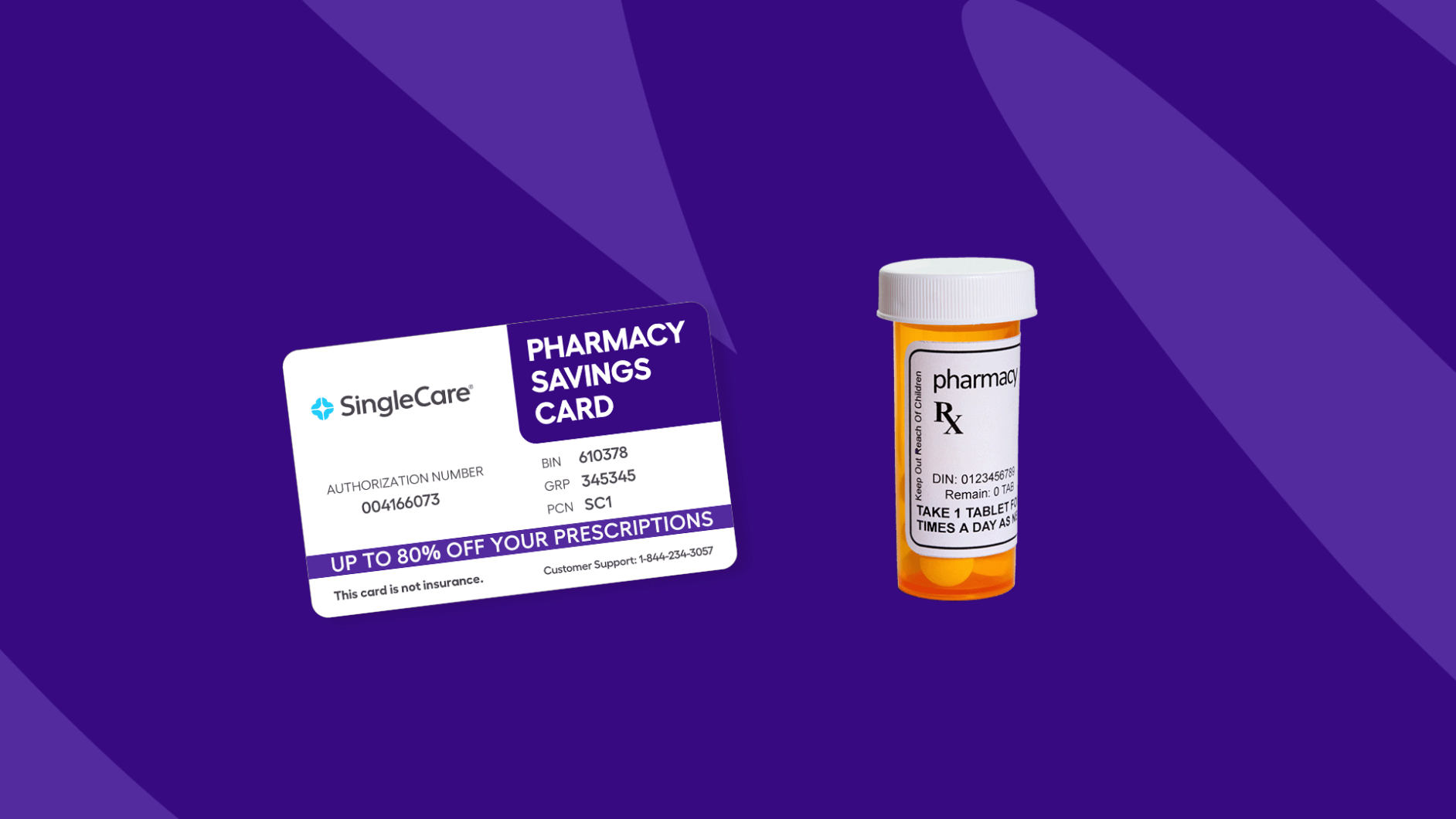Does insurance cover blood thinners? | Cost of blood thinners without insurance | Blood thinner prices | Savings | Other costs
Cardiovascular diseases (CVD) are the world’s leading cause of death, resulting in an estimated 17.9 million deaths each year. Although CVD refers to numerous medical conditions that affect the heart and blood vessels, heart attack and stroke are among the most common types.
According to the Centers for Disease Control and Prevention, approximately 805,000 people in the United States have a heart attack every year, while another 795,000 people have a stroke. These conditions can be extremely detrimental to one’s health and often lead to long-term complications. While there are many treatments available for these conditions, blood thinners are among the most commonly prescribed—with more than two million people taking blood thinners each day.
“Some conditions that may require a blood thinner include atrial fibrillation (AFib), deep vein thrombosis (DVT), pulmonary embolism, heart valve replacements, and congenital heart defects. Blood thinners may also be used after surgery in order to prevent blood clots,” says Erika Gray, Pharm.D., co-founder and Chief Medical Officer of My Toolbox Genomics.
Although the cost of blood thinners varies, they can be expensive and may require additional planning from some consumers. Below, we’ll take a look at the cost of blood thinners—with and without insurance—and give examples of ways to save on the costs of your blood thinner medication.
Does insurance cover blood thinners?
“Insurance companies generally cover blood thinners, since they greatly reduce hospitalizations and further complications of various health issues,” says Dr. Gray. “Newer blood thinners on the market typically have a higher cost, and therefore a harder time being covered.”
Whether insurance will cover the cost of your prescription medication will depend on your specific plan and insurance coverage. Although not all blood thinners will be covered, most insurance, Medicare, and Medicaid plans will cover some blood thinner medications.
Medicaid coverage varies depending on the state, as each state has the ability to determine which prescription drugs they will include in their formulary, or drug list.
Medicare may cover blood thinner medication under Part A (hospital insurance) as part of your medical care during a hospital stay. Otherwise, you’ll likely need Medicare Part C (Medicare Advantage) with drug coverage or Medicare Part D (prescription drug coverage) to get coverage for your blood thinner.
Check your plan’s drug formulary to determine whether your prescribed blood thinner is covered by your health plan. In certain cases, you may be required to get prior authorization before your health plan will cover the cost of your medication. You may also be required to try one or more cheaper alternatives prior to moving on to newer or more expensive medications—a process known as step therapy.
RELATED: How much does Eliquis cost with Medicare?
How much do blood thinners cost without insurance?
Blood thinners don’t actually thin the blood, but instead prevent blood clots from forming and keep clots that have already formed from getting bigger.
“There are two major types of blood thinners that are currently used—anticoagulants and antiplatelets,” says Dr. Gray. “Anticoagulants slow down and inhibit the body’s process of making blood clots. Antiplatelet medications prevent platelet cells from clumping together and forming a clot.”
There are various types of anticoagulants, such as Vitamin K antagonists, direct oral anticoagulants (which include direct thrombin inhibitors and direct factor Xa inhibitors), as well as low molecular weight heparins (LMWH—which are administered via subcutaneous injection).
There are also various types of oral antiplatelets, such as aspirin and related cyclooxygenase inhibitors, thienopyridines such as Plavix (clopidogrel), and miscellaneous antiplatelets such as dipyridamole and cilostazol.
Regardless of the type of blood thinner you’re prescribed, it’s important to follow the medical advice of your healthcare provider and take it as directed. Some blood thinners are only taken once per day, while others may require several doses each day. In addition, some people may only need to take blood thinner medication for a few months, while others with chronic concerns may need them on a long-term basis.
Retail blood thinner prices |
||||
|---|---|---|---|---|
| Drug name | Drug class | Price without insurance | SingleCare price | Savings options |
| Eliquis (apixaban) | Anticoagulant (factor Xa Inhibitor) | $696 per 60, 5 mg tablets | $499 per 60, 5 mg tablet | Eliquis coupons |
| Xarelto (rivaroxaban) | Anticoagulant (factor Xa inhibitor) | $670 per 30, 20 mg tablets | $458 per 30, 20 mg tablet | Xarelto coupons |
| Pradaxa (dabigatran) | Anticoagulant (thrombin inhibitors) | $600 per 60, 150 mg capsules | $150 per 60, 150 mg capsule | Pradaxa coupons |
| Savaysa (edoxaban) | Anticoagulant (factor Xa inhibitors | $467 per 30, 60 mg tablets | $400 per 30, 60 mg tablet | Savaysa coupons |
| Jantoven, Coumadin (warfarin) | Anticoagulant (vitamin K antagonist) | $21 per 30, 5 mg tablets | $1 per 30, 5 mg tablet | Jantoven coupons |
| Plavix (clopidogrel bisulfate) | Antiplatelet (oral thienopyridine) | $284 per 30, 75 mg tablets | $4 per 30, 75 mg tablet | Plavix coupons |
| Brilinta (ticagrelor) | Antiplatelet (oral thienopyridine) | $559 per 60, 90 mg tablets | $417 per 60, 90 mg tablet | Brilinta coupons |
| Effient (prasugrel) | Antiplatelet (oral thienopyridine) | $369 per 30, 10 mg tablets | $6 per 30, 10 mg tablet | Effient coupons |
* Prescription drug prices often change. These are the most accurate medication prices at time of publishing.
Eliquis (apixaban) is the most expensive drug on the list with a retail price of $705 per 60, 5 mg tablets. Unfortunately, there aren’t any generic versions of Eliquis currently on the market.
A branded generic of Coumadin, Jantoven (warfarin), is the least expensive blood thinner with a list price of $21 per 30, 5 mg tablets. Another popular generic version of Coumadin, warfarin sodium, may help you save money on your prescription. You can ask your pharmacist which generic version of Coumadin is stocked in your pharmacy.
RELATED: Eliquis vs. Warfarin: Differences, similarities, and which is better for you
How to save on blood thinner costs
Blood thinners are an important part of the treatment and management of several different conditions, including heart attacks and strokes. However, these medications can cause financial hardships for some. Although the exact drug costs vary, there are ways to save on your prescription blood thinner medication.
- SingleCare coupons: SingleCare offers discounts up to 80% on more than 10,000 prescription medications. Singlecare coupons are always free and can be used even if you don’t have health insurance. Get your free prescription savings card today.
- Medicare Part D Extra Help: Medicare Extra Help is an assistance program that helps people with limited income and resources pay Medicare prescription drug plan costs, such as monthly premiums, yearly deductibles, and prescription copayments.
- Compare pharmacy prices: The cost of prescription medications will vary depending on the pharmacy you shop at. To find the lowest price, you should contact several pharmacies or use SingleCare’s drug search, which allows you to compare pharmacy prices to find the lowest price in your area. It is always best to get all of your medications in one place if possible, so your pharmacist has as much information as possible and can screen for drug interactions and other problems.
- Switch to a cheaper alternative: Talk to your healthcare provider about cheaper alternatives and their potential side effects. This may include switching to a generic drug or choosing a different brand-name drug that is covered by your insurance plan.
- Follow a preventative cardiovascular disease program: Following a prevention program—which may include cholesterol management, blood pressure control, and risk factor screenings—could help reduce costs by reducing the need for medication or intervention.
Other cardiovascular disease costs to consider
Unfortunately, the cost of blood thinners isn’t the only expense associated with heart attack and stroke treatment or prevention. “Patients may have other expenses, such as the direct costs associated with taking other medications, frequent hospitalizations, doctor visits, co-pays, and deductibles. They may also have indirect expenses to consider, such as lost earnings from missing work,” says Dr. Gray.
Proper medication adherence can help reduce some of these costs, so it’s important to find a blood thinner that works for you—at an affordable price. Talk to your healthcare provider about other ways to cut down on your medication cost. They may have additional resources available to help you pay for your blood thinner.











